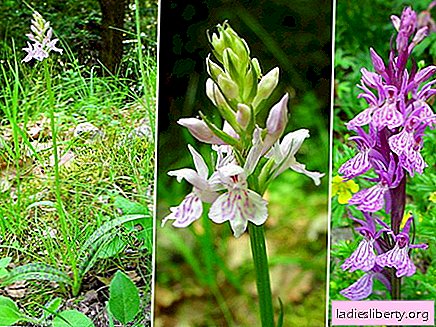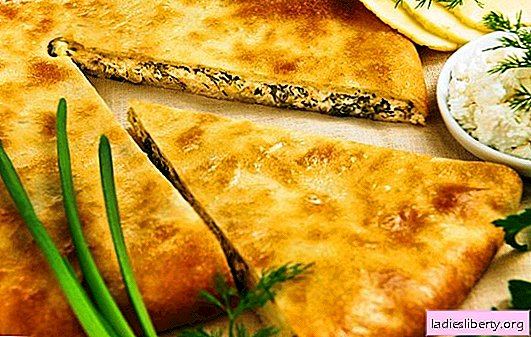
Orchis - general description
Orchis (Órchis) - perennial tuberous plant of the Orchidaceae family, otherwise called wild, or northern orchid. The root is double, with thickenings, such roots are called salep. The leafy simple stalk reaches a height of 50 cm, the leaf is broad-lanceolate, resembles the leaves of a tulip, covers the stalk and narrows at the petiole.
A small flower, located in an spike inflorescence up to 15 s, the color is lilac or dark cherry. On the lower petal are reddish spots to attract insects. The flowering period is from early spring to the end of summer. The fruit in the form of a small box contains small seeds. Propagated by shoots of tubers.
Orchis - species and places of growth
Orchis is a very common plant, about 100 of its species are known in total, however, some species are threatened with extinction, especially in the southern regions. In Russia, there are about 40 species. Among them is the famous male orchis, which is known primarily as a medicine that restores male potency, as well as spotted, purple, elderberry helmet-bearing, napkin, and rustic. Spotted orchis is called cuckoo tears in some places.
Different types of grass prefer different habitats, this is reflected in their names. The most common, helmet-bearing orchis prefers forest glades and edges, moist meadows. This plant is also found in North Africa and America, in the Canary Islands and in the Caucasian countries. It tolerates high terrain and climbs into the mountains to a height of 1800 meters. Digging this plant in the southern regions is strictly prohibited.
Orchis - medicinal properties
This plant has long been used to treat diseases of the gastrointestinal tract and as a healing agent after long-term illnesses, nervous and physical exhaustion. Spotted orchis is a recognized medicine in some countries. They treat hyperacid gastritis, peptic ulcer of the stomach and duodenum, gastroenterocolitis and colitis.
In folk medicine, jelly and soups were made from it to maintain well-being, very little powder of this root contains a daily intake of nutrients. His ability to treat diarrhea gave him the nickname of the ovary root; Salep is widely used in the treatment of tuberculosis and for rinsing the mouth and nasopharynx.
Orchis - dosage forms
The raw material of orchis is considered to be Salep, a bifurcated root that is harvested throughout the summer, but preferably, during the last days of flowering, when the arrow of the flower still remains. The roots come in all kinds - round and elongated.
For the preparation of tinctures, it is preferable to use round roots, they are cleaned, dipped in boiling water so that they do not germinate, and then dried. The tubers contain mucus, (50%), starch (27%), protein substances, sugar, calcium and mineral salt. The roots should be stored in a closed form, avoiding light and dampness, so that they do not blacken and die.
Orchis Recipes
Orchis is a famous male remedy for use in various disorders, and with ordinary physical overwork, chronic prostatitis, sexual impotence, weakness.
- Tincture for men is prepared from a mixture of: Orchis tubers, mallow seeds, lemon balm leaves, walnuts - 2 tablespoons each, pour boiling water (1.5 l), leave for 2 hours. To drink during the day.
- Tincture of orchis roots for alcohol: grind the old root and large rye bread, pour cognac alcohol (75 degrees), leave for 2 months in a dark place, squeeze under the press. Burn the remainder and add to the tincture. Insist 2 more months, drink with wine, preferably nutmeg.
- In the Caucasus, with the help of Orthisol decoction, a contraceptive is prepared on milk, and it is also used for uterine diseases: orchis tubers, a glass of milk or broth, in extreme cases, you can take ordinary boiling water. Shake for a long time, add 4 tablespoons of grape wine. Drink half a glass.
Orchis - contraindications
There are no contraindications to the use of orchis.











